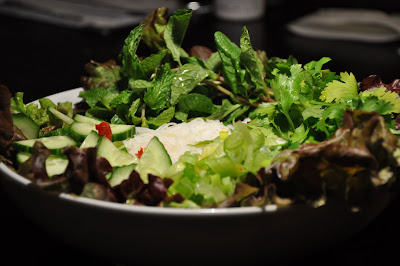Basa are a type of catfish native in to the Mekong River Delta in Vietnam. I've never tried cooking with it before, but as it seems to be widely (and cheaply) available in NYC, I decided to go ahead and try it out. Generally catfish is not my favorite fish, but I have had some dishes recently that have made me reevaluate my former disdain for the fish. The ginger-rubbed catfish num pang (the Cambodian equivalent of the banh mi) at Kampuchea on the LES was one such dish. It was delicious. Usually I object to the texture and somewhat muddy taste of catfish, but this was a completely different catfish from what I had experienced in the past. After trying that catfish I have been tempted several times to order the peppercorn catfish num pang at Num Pang, which is basically a little sandwich take out shop by the same chef as Kampuchea located just south of Union Square, but their pork belly num pang and I have a little love affair going. I can't seem to pass it up. And on the rare occasions that I do convince myself to order something else, the coconut tiger shrimp and duroc pulled pork are simply too good. One of these days I swear I will try the peppercorn catfish - even if it takes me another year to do it.
This catfish was amazing. The outsides were nice and crisp and the insides were tender, but not at all mushy. The fish itself also had some really great flavor. Alex and I were both shocked by how much we liked this dish, particularly since we aren't usually huge fans of catfish. This was a revelation. I really like catfish! Who knew? If you're unsure about catfish like I was, I totally recommend trying out this recipe. You won't be disappointed. I loved the onions and ginger with the catfish, but you could also just use this method of cooking the catfish and serve it on a banh mi (Alex's suggestion), or in a variety of other different ways. We served it tonight with a bowl of rice noodles, mint, cilantro, English cucumber, red-leaf lettuce, and nuoc cham. The idea was that either you could eat the noodles separately as a cold and refreshing noodle salad, or you could roll the catfish up in the lettuce leaves and make little Vietnamese lettuce rolls. The catfish would be equally good served over a bed of steamed rice, but after the fried rice last night I wanted to do something different. I loved our meal, but there are about a zillion different ways you could serve this catfish, all of them delicious.
Recipe after the jump!
Crispy Catfish with Onions and Ginger
Into the Vietnamese Kitchen: Treasured Foodways, Modern Flavors
By Andrea Nguyen
INGREDIENTS:
2 lbs. catfish filets (I used basa)
1 tsp kosher salt
1 tsp kosher salt
canola or other neutral oil (I used vegetable oil)
1 large yellow onion, halved and sliced lengthwise 1/4-inch thick
5-inch piece fresh ginger, peeled and finely shredded
2 1/2 tbsp fish sauce, mixed with 6 tbsp water
3-4 sprigs cilantro
Cut each filet into equal-sized pieces by cutting off a 2 1/2-inch piece from the thin, flat end of the filet. Then halve the fillet lengthwise and cut the halves into 2-inch long pieces. Sprinkle with 1 tsp kosher salt. Set aside.
Preheat oven to 200 degrees F (just hot enough to keep the catfish warm while you cook the onions and ginger). Pour enough oil into a 12-inch nonstick skillet to film the bottom, about 6-7 tbsp. Heat over medium heat. When the oil is hot, add half of of the fish, laying pieces flat in the skillet. The fish will shrink as they cook, so you can crowd the pan a bit. Fry the fish, undisturbed, for 12 minutes, or until the bottom edges are deeply golden. Using chopsticks or a spatula, turn each piece of catfish over. The cooked side should be orange-yellow and very crispy. Fry the second side until deeply golden and crispy, about 7 minutes. Transfer the fish to a paper towel-lined baking sheet and slip it into the oven to keep warm. Repeat with remaining catfish.
When all of the fish is fried, lower the heat to medium-low. There should be 2 tbsp oil remaining in the pan. Add or discard oil as necessary. Add the onion and ginger and saute gently until they have collapsed to about 1/3 of their original volume, about 15-20 minutes. If the pan ever seems dry, splash in some water or add extra oil. Add the fish sauce mixture, stir to incorporate, and raise the heat to medium-high. When the mixture begins to boil, turn off the heat. Let the mixture sit and it will thicken.


No comments:
Post a Comment